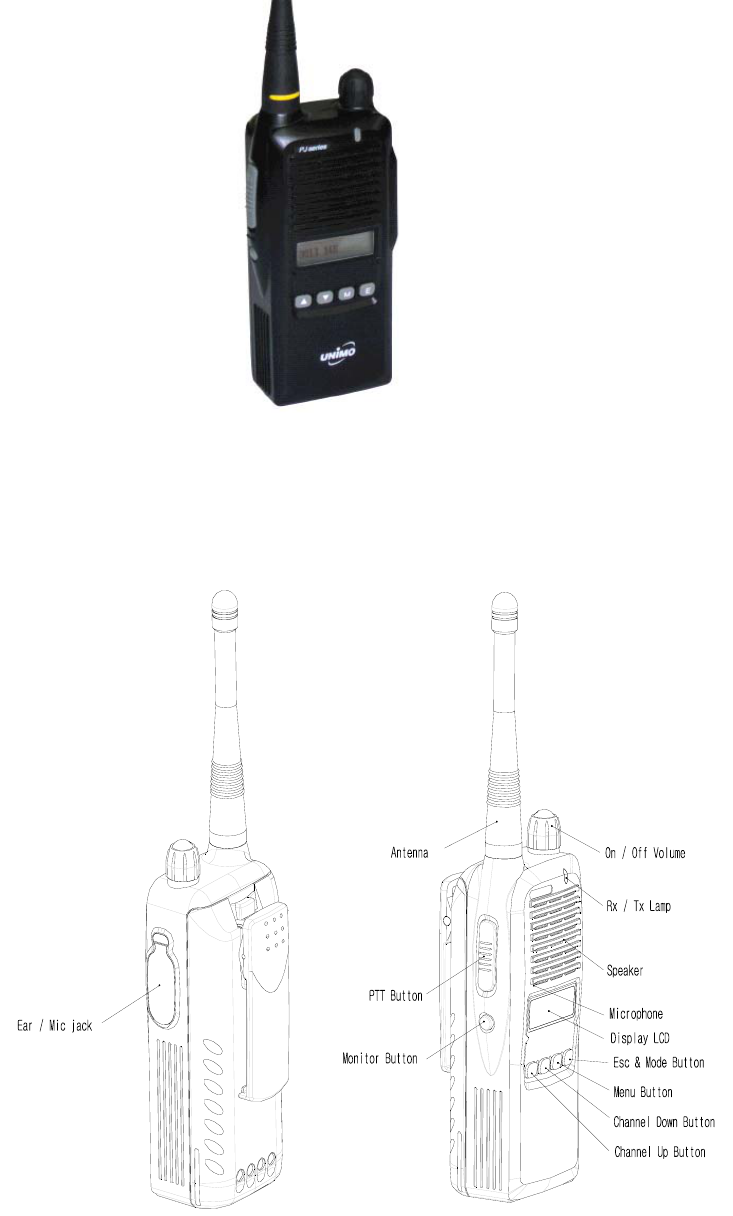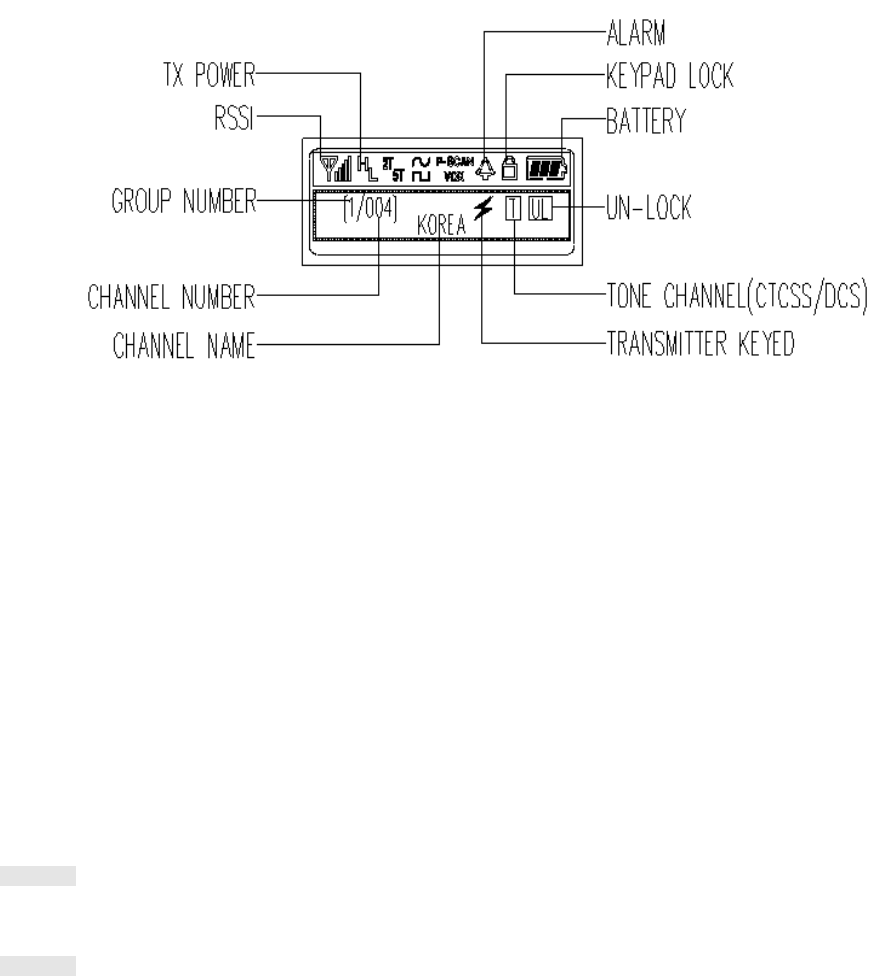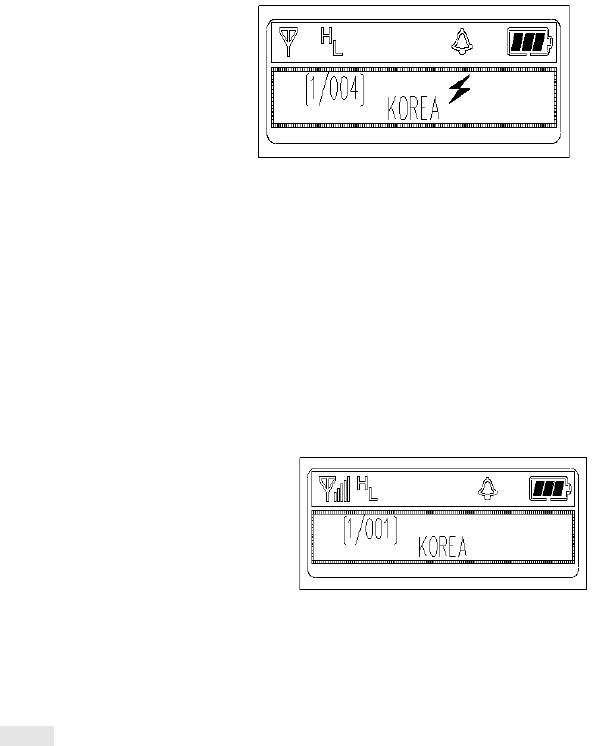Unimo Technology PJ-100NW VHF Handheld Transceiver User Manual PJ 100NW manual hwp
Unimo Technology Co., Ltd. VHF Handheld Transceiver PJ 100NW manual hwp
users manual revised
-1-
USER'S MANUAL
Read this information before using your product.
Acknowledging Special Precautions and the FCC Notice Cautions.
Modifications not expressly approved by the party responsible for compliance could void the
user's authority to operate the equipment.
FCC compliance Information
This device complies with part 15 of FCC Rules.
Operation is subject to the following two conditions:
1. This device may not cause harmful interference, and
2. This device must accept any interference received.
Including interference that may cause undesired operation.
Information to User
This equipment has been tested and found to comply with the limits for a Class B digital
device, Pursuant to part 15 of the FCC Rules.Theselimitsaredesignedtoprovide
reasonable protection against harmful interference in a residential installation.
This equipment generates, uses and can radiate radio Frequency energy and,ifnot
installed and used in accordance with th einstruction, may cause harmful interference to
radio communications.
However, there is no guarantee that interference will not occur in a particular installation. If
this equipment does cause harmful interference to radio or television reception, whic h can
be determined by turning the equipmentoffandon,theuserisencouragedtotry to
correct the interference by one or more of the following measures:
> Reorient or relocate the receiving antenna.
> Increase the separation between the equipment and receiver
> Connect the equipment into an outlet on a circuit different from that to which the
receiver is connected.
Consult the dealer or an experienced radio/TV technician for help.
-2-
RADIO FREQUENCY ENERGY SAFETY INFORMATION
This UNIMO transceiver has been tested and complies with the standards listed below, in regards to
radio Frequency(RF) energy electromagnetic energy(EME) generated by thetransceiver
> FCC RF exposure limits for Occupational use only. RF exposure limits adopted by the FCC are
generally based on recommendations from the national council on radiation protection and measurement,
& the American National National Standards Institute.
> FCC OET Bulletin 65 Edition 97-01 Supplement C
> American National Standards Institute(C95.1-1992)
> American National Standards Institute(C95.3-1992)
WARNING
This UNIMO transceiver generates RF EME while transmitting. RF EME(Radio Frequency Electric &
Magnetic Energy)has the potential to cause slight thermal, or heating effects to any part of your body
less than the recommended distance from this radio transmitter's antenna.
RF energy exposure is determined primarily by the distance to and the power of the transmitting device.
In general, RF exposure is minimized when the lowest possible power is used or transmission time is kept
to the minimum required for consistent communications, and the greatest distancepossiblefromthe
antenna to the body is maintain.
The transceiver has been designed for and is classified for Occupational use only.
Occupational/controlled exposure limits are applicable to situations in which persons are exposed to RF
energy as a consequence of their employment, and such persons have been madeawareofthepotential
for exposure and can exercise control over their exposure.
This means you can use the transceiver only if you are aware of the hazards of operating a transceiver
and are familiar in ways to minimize these hazards. This transceiver is not intended for use by the
general public in uncontrolled environments.
Uncontrolled environment exposure limits are applicable to situations in which the general public may be
exposed to RF energy ,or in which the persons who are exposed as a consequence of their employment
may not be fully aware of the potential for exposure or cannot exercise control over their exposure
The following list provides you with the information required to ensure that you are aware of RF
exposure and of how to operate this transceiver so that the FCC RF exposure limitations are not
exceeded.
> While transmitting(holding the PTT switch), always keep the antenna at least 2.5cm (1 inches) from
your body or face ,as well as from any bystanders
> Do not transmit for more than 50% of the total transceiver use time; transmitting over 50% of the total
usetimemayexceedthelimitsinaccordancetotheFCCRFexposurerequirements. Nominal transceiver
operation is 5% transmission time,5% reception time, and 90% stand-by time
> Use only the specified antenna for this transceiver; this may be either the antenna provided with the
transceiver or another antenna authorized by UNIMO.
Use only UNIMO authorized accessories (antennas, battery packs, belt clips, Speaker/Mics or headsets
etc.):
-3-
When worn on the body, always place the radio in a UNIMO recommended clip or carrying case meant for
this product. The use of other than recommended or approved body-worn accessories may result in RF
exposure levels which exceed the FCC's occupational /controlled environment RF exposure limits.
CAUTION
To ensure that your exposure to RF EME is within the FCC limits for occupationaluse,youmustobserve
and adhere to the above points.
Electromagnetic Interference Compatibility
Electronic devices are susceptible to electromagnetic interference(EMI)if they are not adequately
shielded or designed for electromagnetic compatibility. Because this transceiver generates RF energy, it
can cause interference to such equipment.
>Turn OFF your transceiver where signs are posted to do so. Hospitals and health care facilities use
equipment that is sensitive to electromagnetic radiation.
> Turn OFF your transceiver while on board an aircraft when so instructed, Use of the transceiver must
be in accordance with airline regulations and/or crew instructions.
1. PRODUCT INTRODUCTION
THE PJ-100NW LMR(Land Mobile Radio) of UNIMO Technology Co. Ltd. is a sophisticated
State-of-The-Art unit which incorporates The modern technology available in Tow-Way
Radio Communications.
The use of microprocessor technology makes changing radio characteristics such as
operating frequencies and squelch codes both fast and economical any computer equipped
PJ-100NW dealer can easily reprogram your radio's operating characteristics,oryourradio
can be "Cloned" from a radio already programmed to your desired frequencies and codes.
PJ-100NW LMR satisfies tough environmental requirements while providing cost effective
and reliable communications.

-4-
Fig.1 PJ- 100NW TRANSCEIVER
1.1 FRONT, SIDE, TOP OVERVIEW
1.2 LCD DISPLAY

-5-
2. HOW TO USE
2.1 POWER ON/OFF, VOLUME CONTROL
Turing the power switch clockwise turn power ON and sets the volume level. When the
power is on, transceiver's ID and name appear on the LCD
2.2 PUSH-TO-TALK(PTT) SWITCH
When depressed and held, engages the transmitter and puts radio in the transmit mode. at
that time, TX lamp(red) is lighted. When released, The radio operates in the receive mode.
2.3 MONITOR BUTTON
Selects the mode of operation, Carrier squelch or tone squelch.
CASE 1 : In case of pressing the monitor key for less then 2Sec, checks the channel in
use scanning each channel. Then monitor operation stops as monitor key is released, The
receivemodebegins.
CASE 2 : In case of pressing the monitor key for 2Sec, stop to the channel in useand
keeps the receive mode until identifying the next monitor key.
When the monitor key is pressed, The current operation stop and returns to the receive
mode.
2.4 CHANGE THE CHANNEL
Use the channel button for changing the channel. If press the UP[ ] button, channel▲
number increases. If press the DOWN[ ] button, the channel number decreases. If press▼
and hold the button for a while, the channel is rapidly changed.
2.5 CHANGE THE TX OUTPUT

-6-
Fig.5 Receiving
Fig.4 Transmission
The TX output is selected between HIGH(5W) and LOW(1W). If press the UP button with
PTT button pressed, it is converted to "H"(High). If press the DOWN button with PTT button
pressed, it is converted "L"(Low).
2.6 TRANSMISSION
In Tx mode, as soon as pressing the PTT button, DTMF and 5-Tone ID are transmitted. At that
time, you can't communicate and the Rx/Tx lamp is lighted.
Note) If it is keyed continuously for longer than the programmed time, the transmission is inhibited. (BCLO, TOT feature)
2.7 RECEIVING
You can receive with PTT button released. DTMF or 5-tone sounds and display the caller's name
on LCD according to Transceiver.(See Call Mode section) Whether it is in bad condition or has a
different tone(CTCSS/DCS) in spite of same frequency, it can't be received. In normal, it can
receive all signals by pressing the monitor button and it continues the monitor mode by pressing
the button for 2 seconds. Press the monitor button again to release the monitor mode. Select
the channel for the call.
2.8 ACCESSORY CONNECTOR(PHONE JACK AND MIC JACK)
Provides accessibility for connection to remote accessories such as a speaker microphone.
NOTE : The accessory connector protects the accessory connector. This cover should
remain in place whenever The radio is not being used with an accessory.
2.9 ANTENNA
Helical(VHF) or Whip(UHF) with threaded base.
2.10 LED INDICATOR
A Tri-Colored Light-Emitting Diode(LED) Indicates scan operating status.
2.11 MULTI-FUNCTION LED INDICATORS

-7-
1) Transmit Mode(PTT Switch Depressed)
-. Continuous RED Light : Normal Transmission
-. Flashing RED Light : Low Battery
-. Flashing Pink : Selective Call
2) Receive Mode(PTT Switch Not Depressed)
-. Continuous Green(5 Seconds) : Channel monitor active
-. Flashing Pink : Selective Call or Call alert present
-. Flashing Green : with carrier, Incorrect Tone Detect.
3) PC to LMR Programming Down-Loading
-. Flashing Green : Down-Loading Active
4) LMR to PC Programming UP-Loading
-. Flashing RED : UP-Loading Active
5) LMR to LMR Cloning
-. Flashing RED : UP-Loading Active
-. Flashing Green : Down-Loading Active
2.12 TIME-OUT-TIMER(T.O.T) (PROGRAMMABLE)
TheT.O.TFeatureendsatransmissionwhichisover60secondsinlength.after time out,
a continuous alert tone sounds until The PTT switch is released.
2.13 CHANNEL SCAN
To initiate the scan feature, Rotate the channel selector to the location with the scan list
programmed to it.
1) Non priority channel scan
2) Priority channel scan
2.14 DEFINITION OF PRIORITY CHANNEL
-. Only one priority channel.
-. Parameter format is designated by pc program.
-. Priority channel is always selection by pc program.
-. Home channel is also designated by pc program.
-. Methods of priority scan
Priority scan is proceeded as follows ;
CH#1 PCH CH#2 PCH CH#3 ..... PCH CH#N
2.15 POWER SAVING MODE
1) Power saving mode operation by the following conditions.
-. Only if the receive mode does not have the carrier, Power saving mode is on.
-8-
But it is off in the scan mode.
-. NO Carrier.
-. Power saving mode is designated by PC program.
2) Power saving mode starts after 4Sec of the following conditions
-. After power ON
-. After selecting the new channel.
-. After ending the calls(After receiving or transmitting)
2.16 Cloning Operation
Cloning is the function that clones data,suchasfrequency/time/scan,toother PJ-100NW,
transceivers.
1.Prepare the cable (PECLONA) for PJ-100NW.
(* Available in agency)
2.Turn on the source transceiver with PTT button pressed and turn on the target transceiver with
'E' button pressed.
3.The "clone mode" message is displayed on the source's LCD and the "program mode"
message is displayed on the target's LCD.
4.Connect the cloning cable to EAR/MIC jack of both transceivers.
5.Press 'M' button of the source to start to clone. After cloning, remove cable and turn on and
off both transceivers' power. Check the cloned data.
-9-
GENERAL
Operating Mode
Frequency Range
Frequency Stability
Frequency Control
Programmable Channels
Channel Spacing
Speaker Impedance
Dimensions
Weight
Power Source
Power Supply Voltage Range
Current Drain(maximum)
Typical Battery Life Before Recharge
- [Scan Off, High Power selected,
Duty cycle 5-5-90% (Rx/Tx/Standby)
Conventional (nontrunked) only
UHF : 136 ~174 MHz
±2.5PPM(-30 to +60 )℃
PLL Synthesizer
128 Channels/16 Group
Dual Channel Spacing 12.5/25kHz
16 ohm
126mm(H)×53mm(W)×38mm(D)
310g
7.5V DC rechargeable Li-MH battery pack
6.75 ~ 8.25VDC
Receive mode, rated audio out - 340mA(Audio Max)
Transmit mode - 1.5AH
Standby mode - 70mAH
hour battery saver on, hour battery saver off
RECEIVER
Sensitivity
Squelch Sensitivity
Selectivity
Spurious and Harmonic Rejection
Intermodulation
FM Hum and Noise
Maximum Frequency Spread
Audio Output Power
.35uV 12 dB SINAD
.25uV 10dB SINAD
60dB (12.5KHz), 65dB (25KHz)
65dB
60dB (12.5KHz), 65dB (25KHz)
40dB(12.5KHz), 45dB(25KHz)
40MHz
1.2Watt across an 16-ohm load
3. GENERAL SPECIFICATION
-10-
Audio Distortion
Audio Response
Speaker Impedance
IF Frequencies
Input Impedance
Less than 5% at rated output
+1, -3 dB from 6dB per octave de-emphasis
characteristic from 300~3000Hz
16 ohms
21.4MHz and 455kHz
50 ohms
TRANSMITTER
RF Power Output
Spurious and Harmonic
FM Hum and Noise
Audio Distortion
Audio Frequency Response
Maximum Channel Spread
Output Impedance
5/1Watt
60dB
40dB(12.5KHz), 45dB(25KHz)
5% maximum with 1kHz modulation
+1, -3dB from 6dB per octave pre-emphasis
characteristic from 300~3000Hz
40MHz
50 ohms